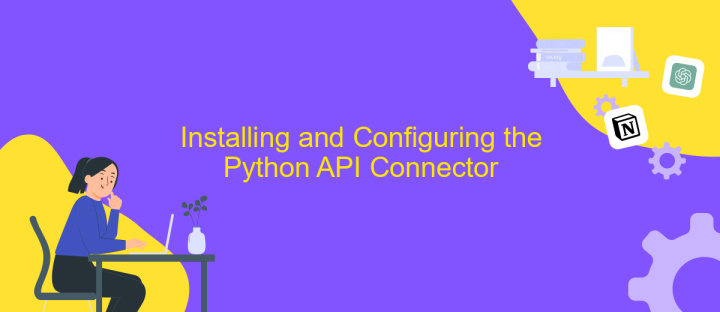Python API Connector
In today's digital landscape, seamless integration between applications is crucial for efficient data exchange and enhanced functionality. Python, with its robust libraries and ease of use, has become a popular choice for developing API connectors. This article explores the fundamentals of creating a Python API connector, providing step-by-step guidance to help you connect your applications effortlessly and unlock new possibilities for automation and data management.
Python API Connector Overview
The Python API Connector is a crucial tool for developers looking to integrate Python applications with external services. It provides a seamless interface for making HTTP requests to various APIs, allowing for efficient data exchange and functionality expansion. With its robust capabilities, developers can automate tasks, fetch data, and interact with web services effortlessly.
- Easy integration with RESTful APIs, supporting GET, POST, PUT, DELETE methods.
- Handles authentication protocols like OAuth2, API keys, and tokens.
- Supports JSON, XML, and other data formats for versatile data handling.
- Offers error handling and logging to ensure reliable communication.
- Customizable headers and parameters for tailored API requests.
By leveraging the Python API Connector, developers can significantly reduce development time and increase efficiency. Its versatility and ease of use make it an essential component for any Python-based project requiring external data interaction. Whether you're building a simple application or a complex system, the Python API Connector provides the necessary tools to connect and communicate with diverse web services effectively.
Benefits of Using the Python API Connector

Utilizing a Python API Connector offers numerous advantages for developers and businesses seeking seamless integration between various software applications. Firstly, Python's simplicity and readability make it an ideal choice for writing and maintaining API connectors. This reduces the time and effort required to establish connections between disparate systems, enhancing productivity and efficiency. Additionally, Python boasts a vast array of libraries and frameworks, such as Requests and Flask, which simplify the process of handling API requests and responses, enabling developers to focus on core functionalities.
Moreover, Python API Connectors facilitate real-time data exchange, ensuring that information is consistently updated across platforms. This is particularly beneficial for businesses that rely on timely data to make informed decisions. Services like ApiX-Drive can further enhance this process by providing ready-made solutions for integrating various applications without extensive coding knowledge. By leveraging Python API Connectors, organizations can streamline their workflows, reduce operational costs, and improve overall system interoperability, ultimately leading to better service delivery and customer satisfaction.
Installing and Configuring the Python API Connector

To begin using the Python API Connector, ensure that you have Python installed on your system. Python 3.6 or later is recommended for optimal compatibility and performance. You can download the latest version of Python from the official website and follow the installation instructions provided for your operating system.
- Open your terminal or command prompt.
- Install the necessary packages by running the command:
pip install requests. This will install the 'requests' library, essential for making HTTP requests to APIs. - Download the Python API Connector package from the project repository or use a package manager if available.
- Unzip the downloaded package to your desired directory.
- Navigate to the package directory in your terminal.
- Run the setup script by executing:
python setup.py install.
Once the installation is complete, configure the connector by editing the configuration file located in the package directory. Specify the API endpoint, authentication details, and any other necessary parameters. Save your changes and test the connection by running a sample script provided in the package. This will ensure that your setup is correctly configured and ready for use.
Making API Calls with the Python API Connector

To effectively make API calls using the Python API Connector, it's crucial to understand the basics of HTTP requests. APIs generally communicate over the internet using HTTP methods such as GET, POST, PUT, and DELETE. Each method serves a specific purpose, such as retrieving data or updating information on a server. Familiarizing yourself with these methods will enable you to interact with APIs more effectively.
Once you grasp the HTTP methods, the next step is to set up your Python environment. Ensure you have the necessary libraries installed, such as `requests`, which simplifies the process of making HTTP requests. With your environment ready, you can start writing scripts to send requests and handle responses, ensuring you include any required headers or parameters.
- Install the `requests` library using pip: `pip install requests`.
- Understand the API documentation to know what endpoints and methods to use.
- Use `requests.get()` for fetching data and `requests.post()` for submitting data.
- Handle responses by checking status codes and parsing JSON data.
By following these steps, you'll be well-equipped to make API calls with the Python API Connector. This approach not only aids in efficient data retrieval but also ensures seamless integration with various web services.
Advanced Features of the Python API Connector
The Python API Connector offers a range of advanced features designed to enhance integration capabilities and streamline data exchange processes. One notable feature is its support for asynchronous requests, allowing developers to handle multiple API calls simultaneously without blocking the execution of their applications. This is particularly beneficial for applications that require real-time data processing or need to interact with multiple APIs concurrently. Additionally, the connector provides robust error handling mechanisms, enabling developers to efficiently manage and log errors, ensuring that the application remains stable and reliable even when encountering unexpected issues.
Another advanced feature of the Python API Connector is its seamless integration with services like ApiX-Drive, which facilitates the automation of data workflows between various applications. By leveraging ApiX-Drive, users can configure complex integrations without extensive coding, simplifying the process of connecting disparate systems. The connector also supports advanced authentication methods, such as OAuth2, ensuring secure and authorized access to protected resources. Furthermore, it offers customizable retry policies and rate limiting, allowing developers to optimize API usage and prevent exceeding service quotas. These features collectively empower developers to build efficient, scalable, and secure API integrations with ease.
FAQ
What is a Python API Connector?
How do I install a Python API Connector?
What are the benefits of using an API Connector?
How can I automate API integrations without extensive coding?
What should I consider when choosing a Python API Connector?
Strive to take your business to the next level, achieve your goals faster and more efficiently? Apix-Drive is your reliable assistant for these tasks. An online service and application connector will help you automate key business processes and get rid of the routine. You and your employees will free up time for important core tasks. Try Apix-Drive features for free to see the effectiveness of the online connector for yourself.

